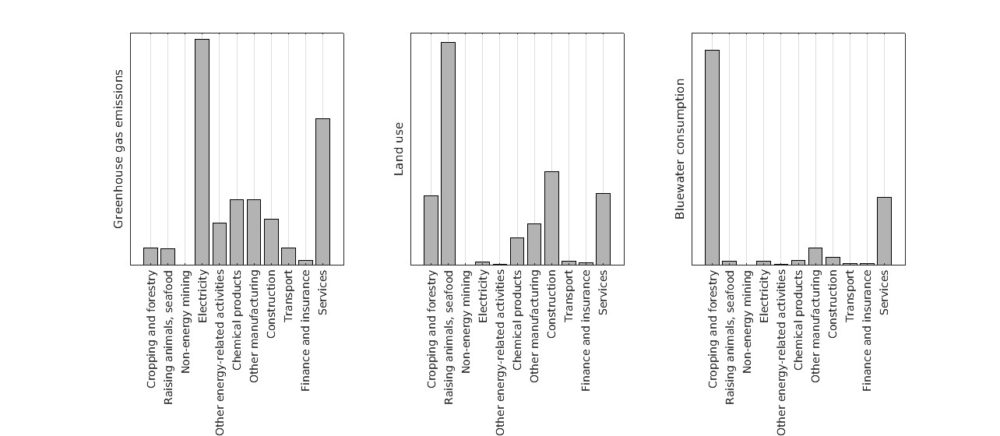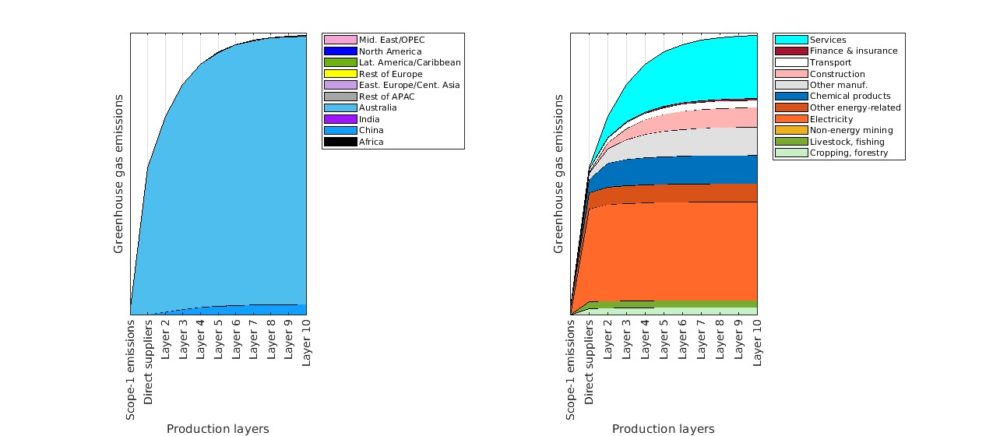2024 Honourable Mention: The University of Sydney
Integrated Scope 3 and Nature Footprint Across the Supply Chain
Legislation is increasingly requiring organizations account for their climate- and other sustainability impacts, in line with new global standards such as those of the International Sustainability Standards Board (ISSB) and the Taskforce on Nature-related Financial Disclosures (TNFD). Universities are attempting to meet these requirements but many find it difficult and piecemeal. The University of Sydney has carried out a footprint calculating its scope-3 emissions and nature impacts holistically, incorporating the entire supply chain, using input-output (IO) analysis, which is governed by United Nations standards.
The pilot footprint was led by PhD candidate with the Integrated Sustainability Analysis (ISA) group in the School of Physics Vivienne Reiner. The supply-chain analysis builds on a carbon footprint of the University and adds water- and land-use indicators from the GLORIA database that ISA initially built for the United Nations and which underpins the UN’s open-access Sustainable Consumption and Production Hotspot Analysis Tool (SCP-HAT).
“To my knowledge, this is the first time that a university has applied IO analysis to the broad categories of the Greenhouse Gas Protocol, while measuring in an integrated way against biodiversity-related indicators,” Ms Reiner said.
Alignment with the Greenhouse Gas Protocol is required by the ISSB’s Climate-related Disclosures IFRS S2. Scope-3 and sustainability reporting was a topic of numerous presentations at the 2024 ISCN Conference, including the University of Sydney session on integrated and comprehensive climate and nature reporting that also enables supply-chain analysis to a high degree of resolution.

Through considering different indicators and measuring impact intensities attached to one underlying economic database, the University of Sydney is tackling the climate and biodiversity crises holistically, to avoid unintended consequences. To trace supply-chain effects, IO analysis is based on input-output tables from countries’ statistical agencies as well as international trade data such as from UNComtrade. For this pilot, in addition to greenhouse gas (GHG) emissions, the University selected land use and bluewater consumption indicators, but in future may add other biodiversity-related indicators such as particulate matter, air pollution and sulpher and nitrogen emissions.
The analysis offers the opportunity for a step-change in the University’s approach to sustainability, by identifying hotspots throughout the value chain for prioritisation, rather than simply focusing on direct impacts on campus and ‘talking to suppliers’ 1-2 layers back. Like peeling back the layers of an onion, the analysis shows how far back in the supply chain one must look, in addition to identifying the most impactful supply chains.

Phase II not completed at the time of these Awards, is a novel extension of this IO analysis downstream, satisfying the GHG Protocol’s requirements for upstream and downstream emissions calculations, in a comprehensive manner.